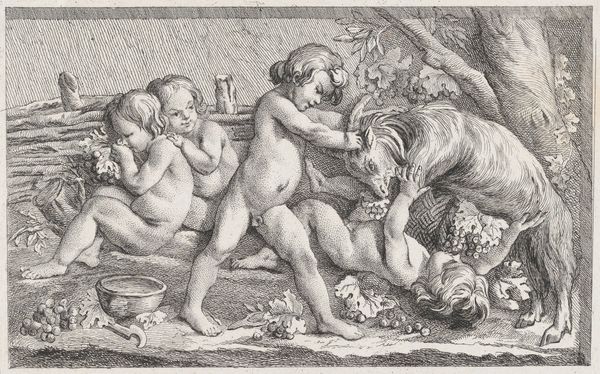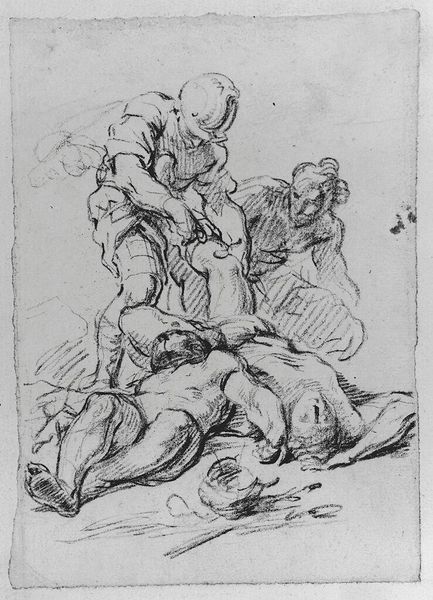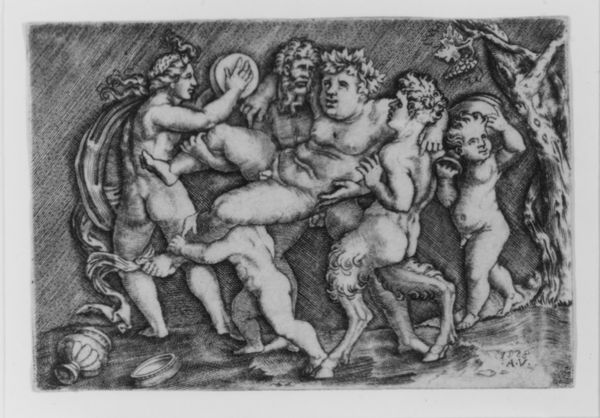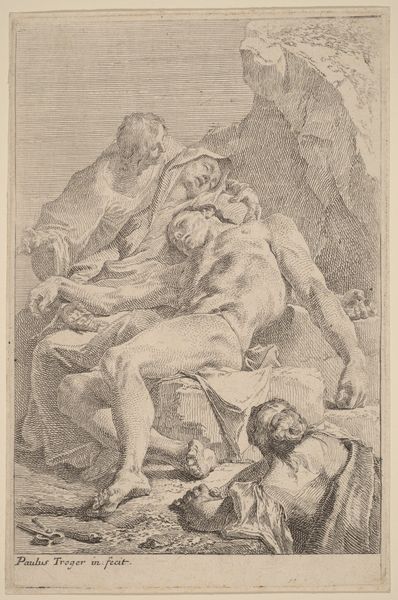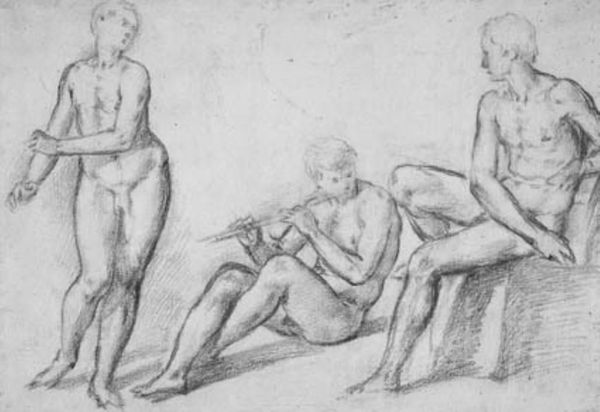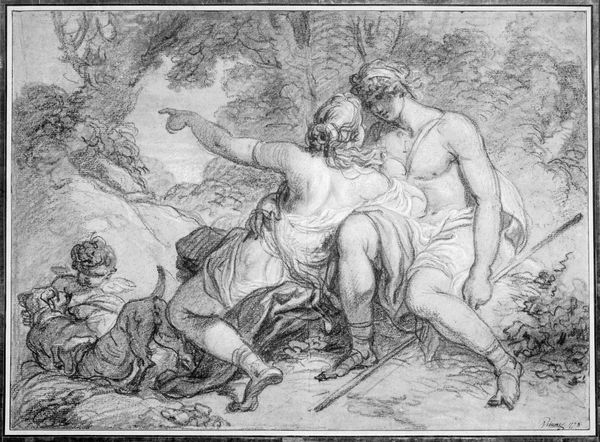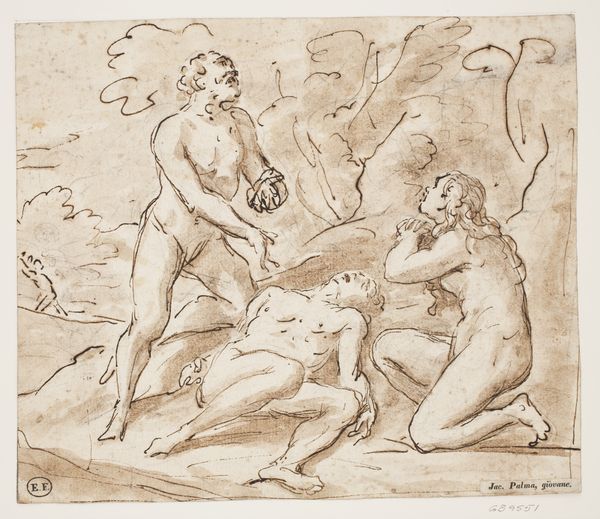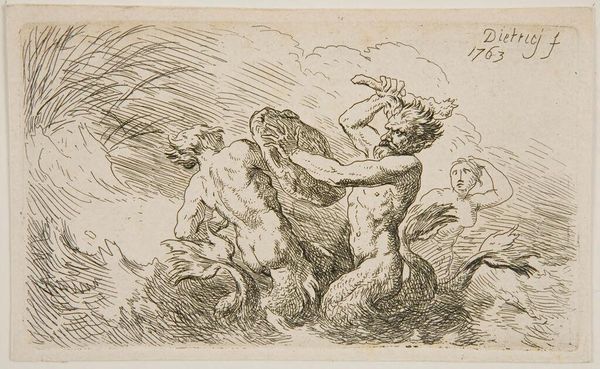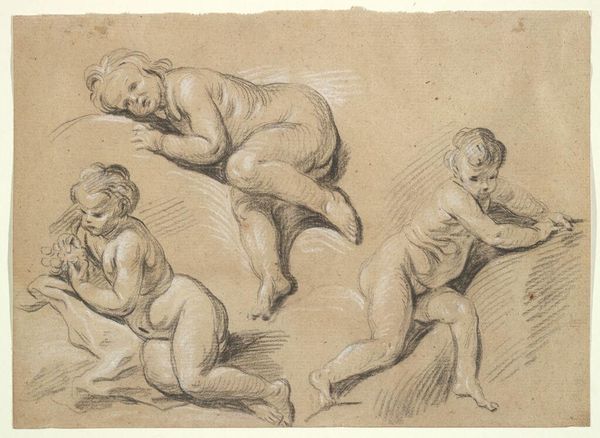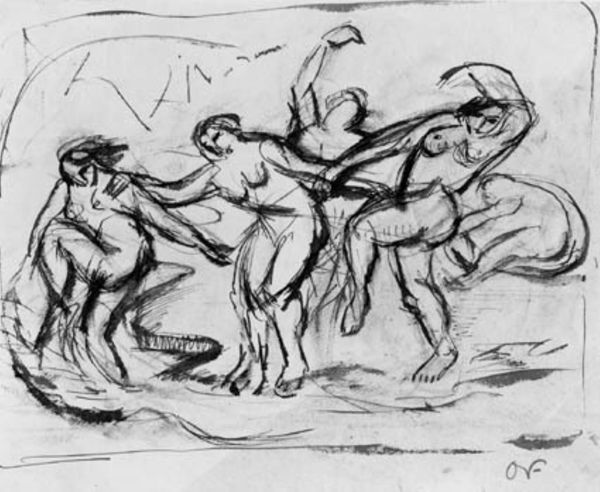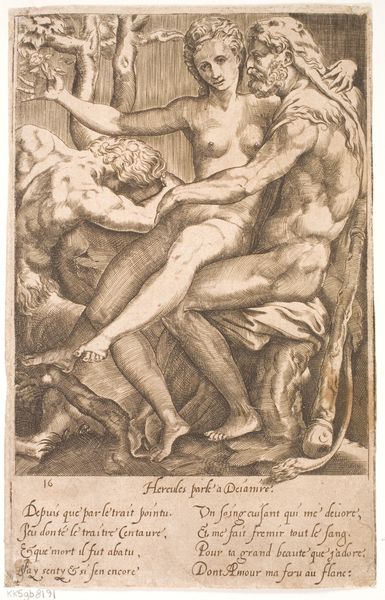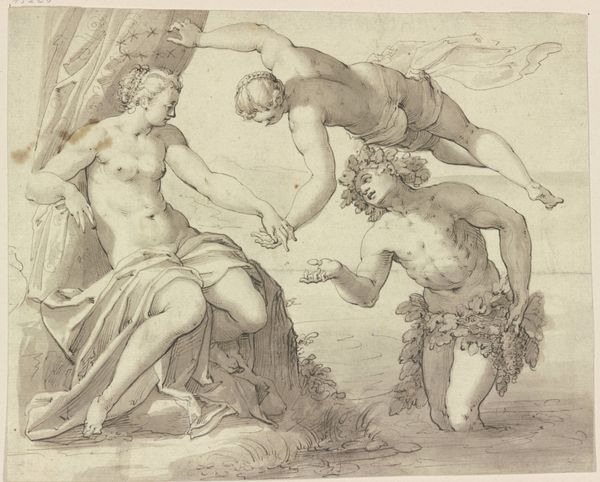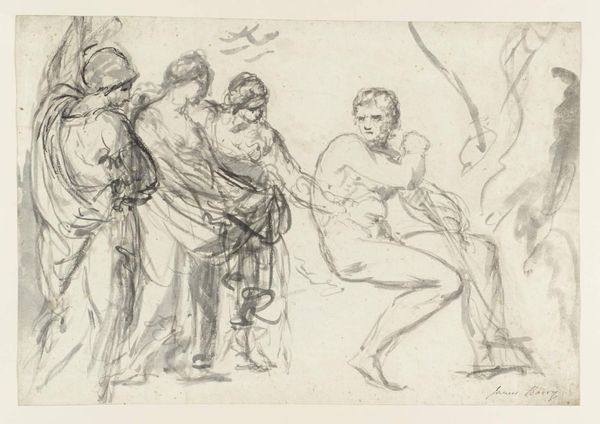
drawing, ink
#
pencil drawn
#
drawing
#
baroque
#
pencil sketch
#
charcoal drawing
#
figuration
#
ink
#
pencil drawing
#
portrait drawing
#
nude
Dimensions: 228 mm (height) x 332 mm (width) (bladmaal)
Curator: Immediately, the sketch's rough, unfinished texture and the implied movement create a sense of raw, unrestrained energy. Editor: Precisely. Here we have Domenico Parodi's "Group of Nymphs and Satyrs," likely rendered sometime between 1668 and 1740, currently residing at the SMK. Parodi explores classical mythology with ink and pencil, a rather typical thematic approach within his Baroque context. Curator: Context is key here. Nymphs and satyrs, figures often relegated to the periphery of more heroic narratives, are centered. Their erotic encounters, traditionally perceived as transgressive, invite interpretations around social and sexual power dynamics. How do you see the composition functioning in this respect? Editor: The figures form a tight, almost claustrophobic cluster. There's a lack of clear focal point, a sense of equal weight given to each figure that's vital. This visual choice reflects the values of a patriarchal, class-based society obsessed with a sort of 'natural order' which served as the basis for the dominant culture. Curator: Do you find that approach, and even choice of mythologized subjects, inherently politically charged? I wonder what, or perhaps whose power Parodi may be interrogating in this period, using a well established visual vocabulary for subversion. Editor: Subversion, absolutely! Notice the interplay of light and shadow—the figures emerge from and recede back into the darkness. It emphasizes the human form as an ideal of beauty, pushing the eye around the artwork again and again, lingering on line, texture and value shifts. Curator: A pushback against the clear, rational compositions favored in earlier periods is evident, echoing socio-political unrest simmering beneath the surface. The choice to depict these figures in a state of abandon could also be seen as an endorsement of non-normative pleasures and behaviors within the constraints of accepted culture. Editor: I appreciate how this close study of artistic foundations allows us to better connect with historical movements of resistance. Curator: Absolutely. And, I think appreciating these foundations helps us highlight figures who may be participating in historical forms of rebellion and revolution.
Comments
No comments
Be the first to comment and join the conversation on the ultimate creative platform.
